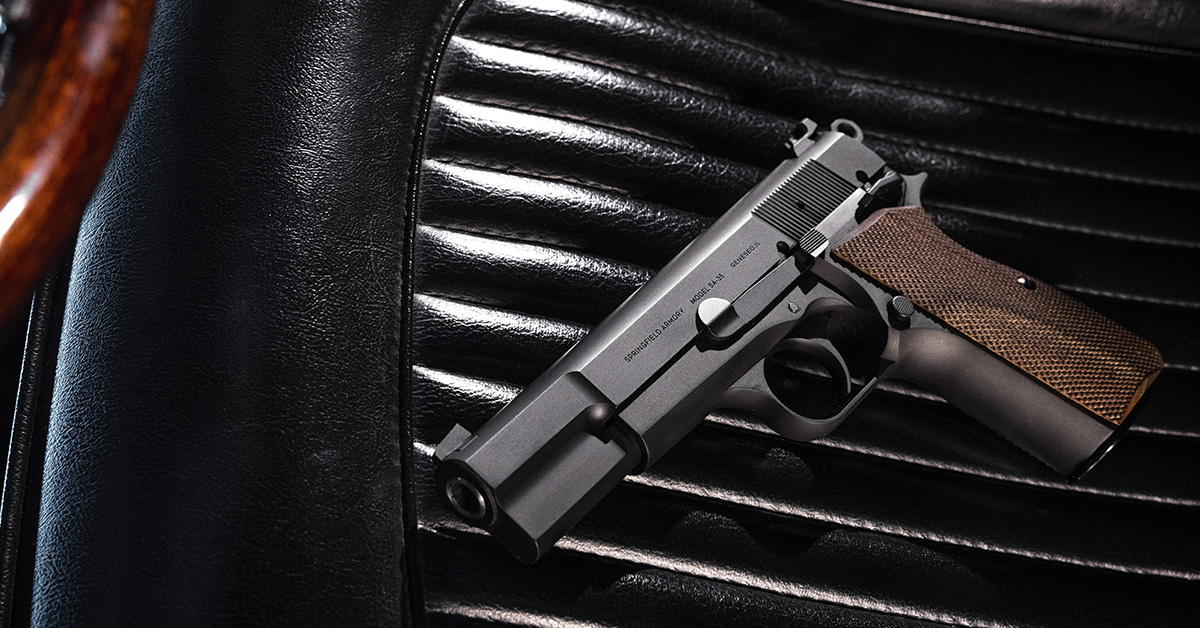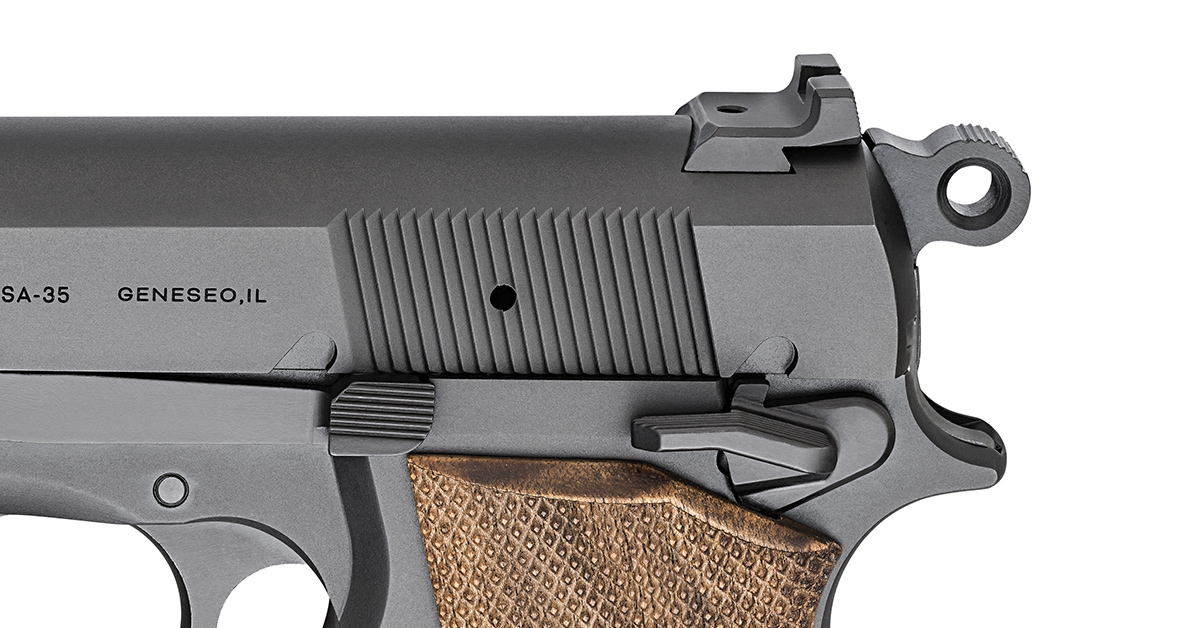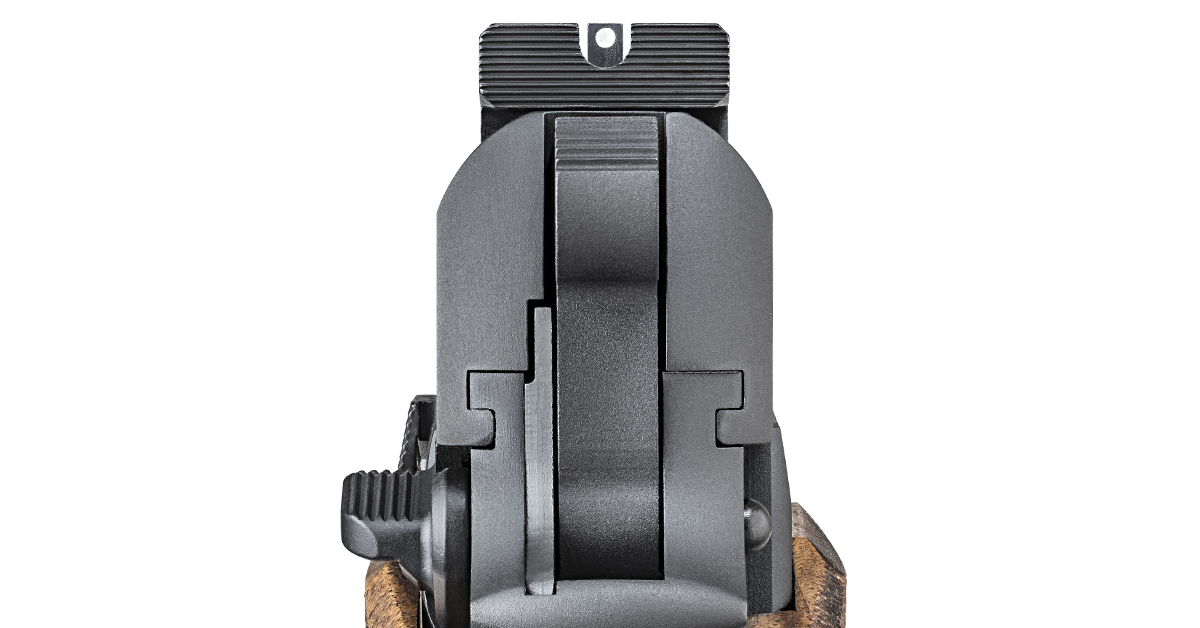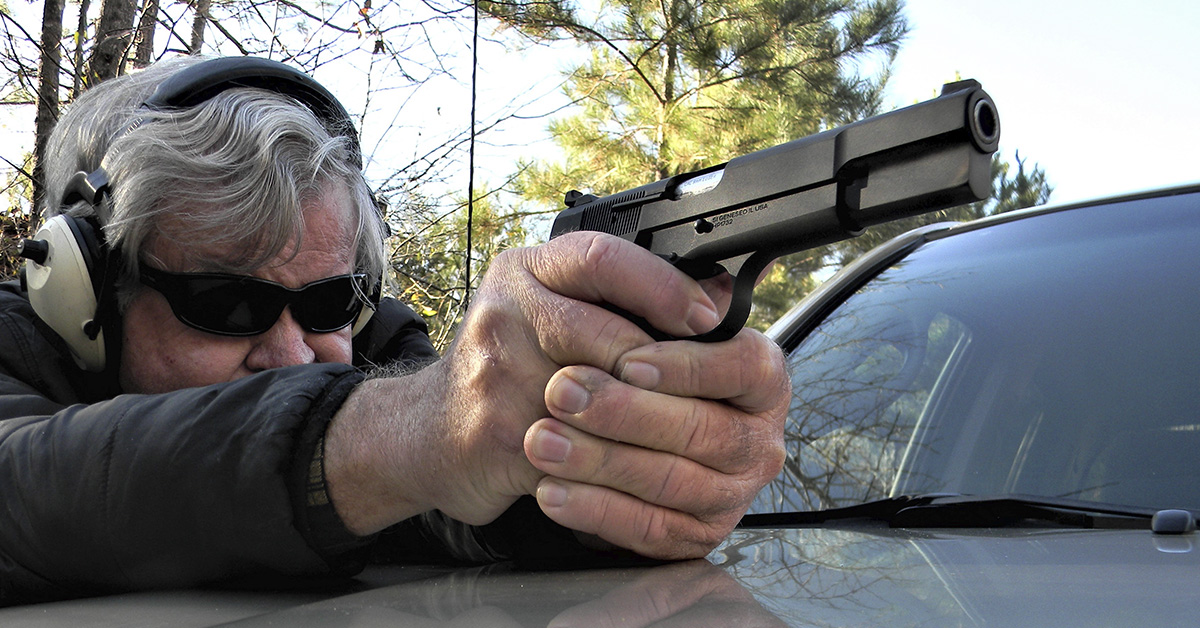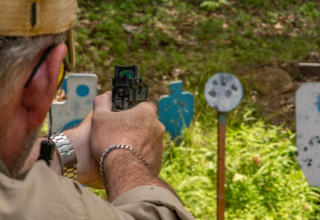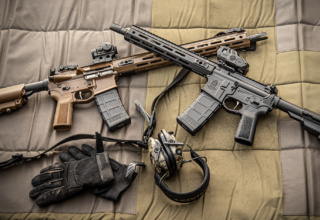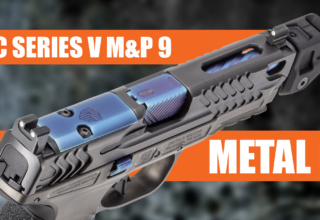Based on the legendary Hi-Power, the Springfield SA-35 brings classical styling and old-school manufacturing “heft” to the modern era
by Bob Campbell
Handguns become classics because they stand the test of time and offer excellent performance over decades. They also often have some historical significance. The Fabrique Nationale P35, Grande Puissance, or Hi-Power are counted among these. The Hi-Power is one of the most successful handguns of all time. Manufactured in the millions, the Hi-Power was issued to the armed services of some one hundred nations, give or take, and used by special teams and crack units the world over. The pistol has been so successful it has been used by both sides in practically every conflict since 1939. A secret of the pistol’s manufacturing success is often overlooked. While I am certain John Moses Browning was well pleased with the Colt 1911 Government Model, the Hi-Power is less expensive to manufacture. With no barrel bushing or grip safety and a simplified lockwork without the “three fingered” leaf spring, the Hi-Power required less time to manufacture.
Thus, it was inevitable that the pistol would be cloned, yet it was never copied to the extent of the 1911. The FEG, Argentine FM, Israeli Kareen, Tisas, and Arcus were among the clones and close copies. None were poor quality but only rivaled the original’s fit and finish. The real thing was never terribly expensive compared to other handguns. While a tight budget begs compromise, the Hi-Power usually set us back less than a comparable 1911 handgun.

But that was the past. The pistol eventually became expensive to manufacture, as most 1920s designs do. The Hi-Power was designed in the initial stages by John Moses Browning and finished up by Dieudonné Saive, a talented inventor in his own right. The grip frame fits most hands well, the angled camming surfaces and barrel lugs lend themselves to good accuracy, and the pistol delivered high capacity with its thirteen-round magazine.
By 2018, a retail price of well over one thousand dollars limited sales and the pistol was no longer a contender for military and institutional sales. As of 2020, among the few major military units using the Hi-Power was the Canadian Army. Their Inglis-manufactured handguns have been in service since World War II. FN discontinued the pistol in 2018. Prices of used service grade pistols have steadily appreciated in asking price.
Springfield Armory has introduced a pistol that is a close copy — perhaps an exact clone in important specifications — of the Hi-Power. This is a smart move by Springfield and a welcome one by Hi-Power fans. When Springfield designs a pistol, it is with an eye toward the long run, as well as functionality and reliability. Springfield did not choose to clone the original military pistol nor the late-model MKII. They instead introduced a pistol with its own flavor — a modern pistol with a classic appearance most of us find appealing.
The SA-35 features a matte blued finish somewhat more attractive than the late-model Browning MKII, if not a lustrous 1960s finish. The pistol doesn’t feature an ambidextrous safety but instead a Springfield-designed speed safety. The grips are much improved over the sometimes-too-thick slabs found on vintage Browning pistols. The stocks are nicely checkered and finished. The hammer is a rowel type. The pistol’s sights are a model for modern personal defense shooters.
Let’s look again at how the pistol relates to the original before we begin dissecting the tactical ability of the Springfield SA-35.
The Hi-Power is a single action design. The trigger does one thing: it drops the hammer. Pull back the slide and the hammer is cocked. The trigger is pressed to drop the hammer. The pistol fires and the hammer is cocked during recoil. To carry the pistol ready for defensive use, the hammer is pulled back and the safety applied. Original Hi-Power pistols had a rather small safety that wasn’t very positive in operation. If you are not comfortable with cocked-and-locked carry — hammer to the rear and safety on — this pistol isn’t for you. Carrying the pistol half-loaded (military parlance) without a round in the chamber is tactically inept. You do not always have two hands available to manipulate the slide. Hammer-down carry is fumble prone. The Hi-Power features a stout hammer spring guaranteed to crack the primer of any old surplus or poor-quality ammunition from Burma to Bangladesh. If you are not enamored with this system, then there is the SIG or the GLOCK, not to mention the Beretta 92.
The pistol disassembles easily. Clear the chamber and magazine and lock the slide to the rear. The safety is used to lock the slide to the rear by bumping the safety into a notch in the slide. The slide lock is removed by pressing the safety from right to left as the magazine stop tab is guided out of a slot in the slide. The slide is then released to run forward. The magazine guide and assembly are removed, and the barrel lifted out.
The trigger of the Hi-Power was designed to run around the circumference of the magazine — a more difficult chore than Browning found with the single-column magazine of the 1911. The original magazine held thirteen rounds. The new SA-35 design accommodates fifteen rounds. The slide and frame are steel forgings. I would never impugn a quality cast frame. Late-model Browning Hi-Power pistols, including the .40 version, used a cast frame. I point to Ruger handguns as a model of strength in cast parts. But I prefer forged when I can have it. I have no use for MIM (metal-injection molded) parts in a carry gun and they will not be found in the SA-35. The original pistol featured a magazine disconnect. When the magazine was removed, the pistol would not fire. While there is some merit in this device for troop use, I prefer not to have this feature in a personal defense pistol. Springfield chose to produce a pistol without the magazine disconnect. I agree with this decision. So, we now have a forged pistol without MIM parts featuring a nice finish, speed safety, and good sights. The pistol comes with the original Browning action with a barrel that locks up with locking tugs on the top and angled camming surfaces on the bottom.
Sometimes, guns look a lot alike, but they differ in a tiny detail. This is often the case with CZ clones, as an example, and simple things such as grips do not interchange. The SA-35 accepts all generations of Hi-Power magazines. I used MecGar magazines, for instance, to compliment the single magazine supplied with the SA-35. Grips are compatible with the new SA-35 frame. A Bar Sto Precision drop-in barrel fit neatly in the SA-35’s slide.
The cornerstones of a combat pistol are the sights and the trigger. Springfield chose a U-notch rear sight with a serrated rear face. This is a ledge or wedge type. The design features a good sight picture but also allows butting the sight against a heavy belt or boot heel to manipulate the slide in the event of a malfunction. I think that a valuable use might be releasing the slide during a one-hand speed load. This drill is executed by running the pistol to slide lock and then dumping the spent magazine. The pistol is jammed into the belt or between the knees. A fresh magazine is loaded and the slide dropped. Dropping the slide by bumping the rear sight is a positive operation.
The front post is a simple white center post. The safety is positive in operation with a firm indent. It isn’t going to rub off when you don’t want it too! The safety’s shelf is nicely serrated. The trigger bar of the Hi-Power must clear the magazine, and this means a smooth trigger action is more difficult to obtain with the Hi-Power — or so they say. I have tested Hi-Power trigger actions from five to eleven pounds compression. Springfield got things right with the SA-35. Compression on the Lyman digital scale was just over five pounds when the pistol arrived. It has since settled into a nice 4.9 pounds after a few hundred dry-fire cycles.
The pistol came lubricated on the long bearing surfaces and rolled out of the box ready to run. I drew and fired quickly during the evaluation. The pistol is among the fastest to an accurate first shot hit of any handgun. The 1911 and the Hi-Power may be equally fast to an accurate first shot — we are splitting hairs — and nothing is faster.
The center of the targets took a beating, leaving one ragged hole. Cutting to the chase, the pistol is nearing 450 rounds without a single failure to feed, chamber, fire, or eject. Combat ability is high. The pistol has an excellent balance that makes for a feel old-time writers often called “lively in the hand.” That is a fitting description of this handgun. It seems almost anti-climactic to gauge the pistol’s absolute accuracy. Firing at targets at known and unknown ranges seems the better test, but an accuracy test is standard here, so I used a MTM K-Zone rest to fire the smallest possible groups. The SA-35 is quite an accurate handgun and performed well with a wide variety of loads. Here are the results of the five-shot groups at 25 yards:
- Hornady 135-grain Critical Duty, 1090 fps, 1.75 in.
- Fiocchi 115-grain XTP, 1122 fps, 2.0 in.
- Fiocchi 147-grain JHP, 880 fps, 2.15 in.
- Winchester 115-grain Silvertip, 1201 fps, 2.35 in.
- Remington 115-grain UMC, 1140 fps, 2.5 in.
- Black Hills 115-grain XTP, 1167 fps, 2.5 in.
- Federal 147-grain American Eagle, 980 fps, 2.6 in.
My conclusion is that the Springfield SA-35 is a bit more accurate than most Hi-Power pistols.
What I Like
The finish is good and evenly applied. The fit is tight — perhaps tighter than most. Specifications and tolerances are quite a subject. A tight pistol will exhibit less wear over time. I like the pistol’s reliability. Accuracy is good. The speed safety is a superior choice and so are the sights. A modern fifteen-round magazine is a good feature.
What I Don’t Like
The pistol is supplied with one magazine. I would like to have two, as Hi-Power magazines are much more difficult to obtain than GLOCK or 1911 magazines. While I find the speed safety ideal for my use, some will want an ambidextrous safety.
Compared To
The SA-35 easily exhibits the highest quality of any Hi-Power clone I have fired and examined. Compared to a 9mm 1911, I think the SA-35 is a superior carry piece. Compared to the polymer frame striker-fired crowd, the pistol delivers faster accurate first shots and should be more accurate for most uses.
Springfield SA-35 Specifications
- Caliber: 9mm
- Color: black
- Barrel: 4.7-in. cold hammer forged, 1:10
- Slide: forged carbon steel, blued
- Frame: forged carbon steel, blued
- Sights: white dot front, serrated tactical rack rear
- Recoil System: SA-35 recoil spring and guide rod
- Grips: checkered walnut
- Magazines: (1) 15-round
- Weight: 31.5 oz.
- Length: 7.8 in.
- Height: 4.8 in.
- MSRP: $799

